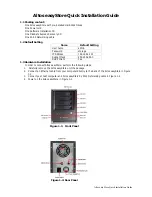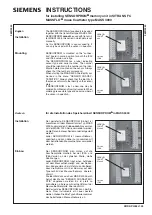
09.01
10 Axis and Spindle Installation
10.4.1 Drive optimization
Example:
Maximum jerk (r):
50 m/s
3
Maximum acceleration (a):
4 m/s
2
Programmed velocity (v)
24 m/min
Interpolation cycle (TIPO):
10 ms
A jerk of 50 m/s3 results in a change in acceleration per IPO cycle of 0.5 ms/2.
This is calculated as follows:
100·TIPO·s
2
r=50
=
m
s
3
/TIPO
50 m
= 0.5
m
s
2
With jerk limitation the maximum acceleration of 4 m/s2 is not reached until 8 IPO cycles have
elapsed.
In addition, the change in acceleration of 0.5 m/s2 per IPO cycle results in a change of velocity
of 0.005 m/s (corresponds to 0.3 m/min) per IPO cycle.
This is calculated as follows:
a=0.5
=
0.5 m
100·TIPO·s
= 0.005
m
min
m
s
2
/TIPO
m
s
/
TIPO=0.3
In the table below a movement from zero speed is assumed:
Constant, maximum acceleration takes place In the 8th to 10th IPO cycle. Then, the
acceleration is reduced to zero again with jerk limitation. After 17 IPO cycles a velocity of 24
m/min is reached and a ”constant travel phase” follows.
Time [ms]
10
20
30
40
50
60
70
80
90
100
r [m/s
3
]
0.5
0.5
0.5
0.5
0.5
0.5
0.5
0.5
0
0
a [m/s
2
]
0.5
1.0
1.5
2.0
2.5
3.0
3.5
4.0
4.0
4.0
v [m/min]
0.3
0.9
1.8
3.0
4.5
6.3
84
10.8
13.2
15.6
Time [ms]
110
120
130
140
150
160
170
180
190
200
r [m/s
3
]
-0.5
-0.5
-0.5
-0.5
-0.5
-0.5
-0.5
-0.5
0
0
a [m/s
2
]
3.5
3.0
2.5
2.0
1.5
1.0
0.5
0
0
0
v [m/min]
17.7
19.5
21.0
22.2
23.1
23.7
24.0
24.0
24.0
24.0
© Siemens AG 1992 All Rights Reserved 6FC5197- AA50
10–29
SINUMERIK 840C (IA)
Summary of Contents for SIMODRIVE 611-D
Page 2: ......
















































